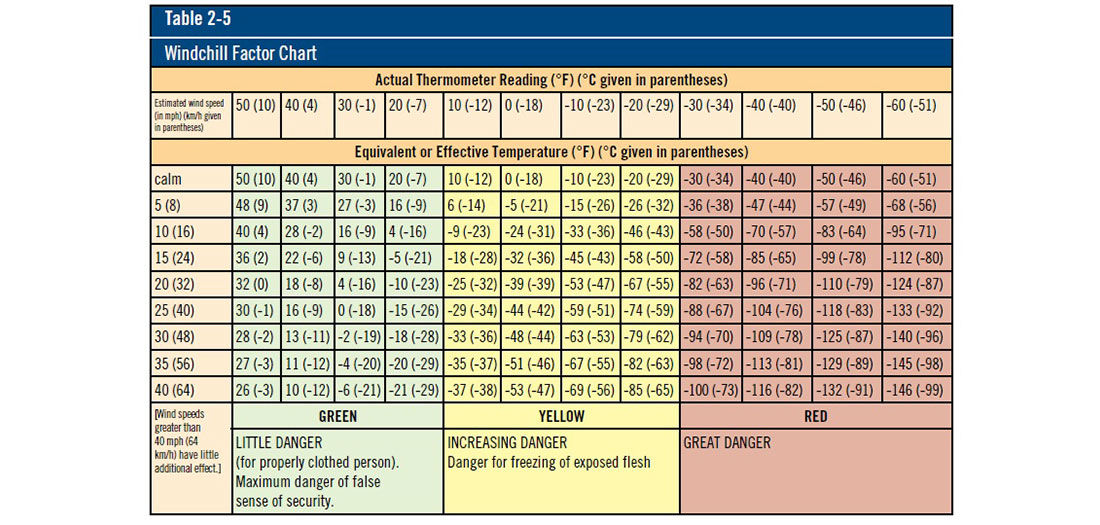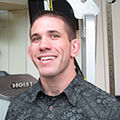Environmental conditions are important to consider when designing an exercise program. If you live in a climate that is subject to frigid conditions and you plan to train clients outdoors, you’ll want to consider the implications of exercising in the cold. This blog reviews how to take safety measures when training in the cold.
Avoiding precautions while exercising in the cold could lead to multiple conditions, including hypothermia, frostbite, or a generalized vasoconstriction effect, which can be dangerous for individuals with hypertension and/or heart disease. Chilling can occur quickly when the body is wet from sweat, and heat loss is accelerated in windy conditions, so there is much to consider when making exercise recommendations for your clients in inclement weather.
You should be familiar with the wind-chill factor chart and understand that, as temperatures decrease and/or wind speeds increase, there is a greater risk for adverse health consequences.

Here are some important cold-weather exercise tips to share with your clients:
- Wear several layers of clothing so that garments may be removed or replaced as needed. Remove outer layers as intensity increases and then replace these layers during rest or cool-down periods.
- Allow for adequate ventilation of sweat, as wet clothing will continue to drain the body of heat.
- In windy conditions, it is best to begin the session facing into the wind and to finish with the wind at your back.
- Select garment materials that allow the body to give off heat during exercise and retain body heat during rest. Wool is an excellent choice for exercising in the cold as it maintains body heat even when wet; cotton, however, is a poor choice because it absorbs sweat. New synthetic materials are also a desirable choice, as they help to wick moisture away from the body. Nylon is an appropriate choice for outerwear when wind-chill is a factor, but synthetic materials like Gore-Tex are probably the best choice because they block wind and are waterproof, which allows moisture to move away from the body.
- Replace body fluids lost while exercising in the cold.
- Monitor body weight over several days because sweat loss may not be as evident in the cold.




 by
by 







 by
by